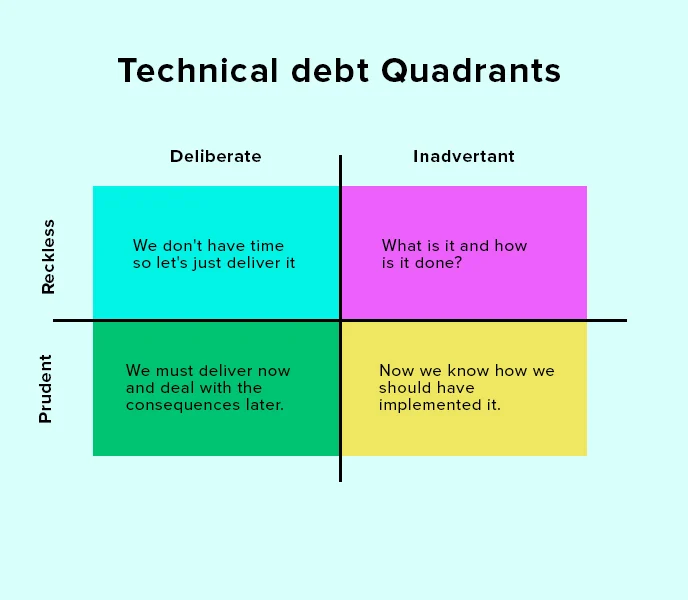BREAKING NEWS
LATEST POSTS
-
India’s PhantomFX To Acquire Oscar Winner Phil Tippett’s VFX Company Tippett Studio
https://deadline.com/2024/03/tippett-studio-to-be-acquired-by-phantomfx-1235855050/
Under the agreement, Tippett Studio will retain its name and continue to provide high-level VFX and post-production services to the major studios, networks, and independents.
-
Lisa Tagliaferri – 3 Python Machine Learning Projects
A Compilation of 3 Python Machine Learning Projects
- How To Build a Machine Learning Classifier in Python with Scikit-learn
- How To Build a Neural Network to Recognize Handwritten Digits with
TensorFlow - Bias-Variance for Deep Reinforcement Learning: How To Build a Bot for Atari with openAI gym
-
Yuval Noah Harari argues that AI has hacked the operating system of human civilisation
https://archive.is/ugOEw#selection-1087.0-1087.86
This thought-provoking text raises several concerns about the potential impact of artificial intelligence (AI) on various aspects of human society and culture. The key points can be summarized as follows:
Manipulation of Language and Culture:
AI’s ability to manipulate and generate language and communication, along with its potential to create stories, melodies, laws, and religions, poses a threat to human civilization.
The author suggests that AI could hack the main operating system of human culture, communication, by influencing beliefs, opinions, and even forming intimate relationships with people.Influence on Politics and Society:
The author speculates on the implications of AI tools mass-producing political content, fake news, and scriptures, especially in the context of elections.
The shift from the battle for attention on social media to a battle for intimacy raises concerns about the potential impact on human psychology and decision-making.End of Human History?
The text suggests that AI’s ability to create entirely new ideas and culture could lead to the end of the human-dominated part of history, as AI culture may evolve independently of human influence.
Fear of Illusions:
Drawing on historical philosophical fears of being trapped in a world of illusions, the author warns that AI may bring humanity face to face with a new kind of illusion that could be challenging to recognize or escape.
AI Regulation and Safety Checks:
The author argues for the importance of regulating AI tools to ensure they are safe before public deployment.
Drawing parallels with nuclear technology, the need for safety checks and an equivalent of the Food and Drug Administration for AI is emphasized.Disclosure of AI Identity:
The text concludes with a suggestion to make it mandatory for AI to disclose its identity during interactions to preserve democracy. The inability to distinguish between human and AI conversation is seen as a potential threat.
-
Andrew Perfors – The work of creation in the age of AI
Meaning, authenticity, and the creative process – and why they matter
https://perfors.net/blog/creation-ai/
AI changes the landscape of creation, focusing on the alienation of the creator from their creation and the challenges in maintaining meaning. The author presents two significant problems:
- Loss of Connection with Creation:
- AI-assisted creation diminishes the creator’s role in the decision-making process.
- The resulting creation lacks the personal, intentional choices that contribute to meaningful expression.
- AI is considered a tool that, when misused, turns creation into automated button-pushing, stripping away the purpose of human expression.
- Difficulty in Assessing Authenticity:
- It becomes challenging to distinguish between human and AI contributions within a creation.
- AI-generated content lacks transparency regarding the intent behind specific choices or expressions.
- The author asserts that AI-generated content often falls short in providing the depth and authenticity required for meaningful communication.
- Loss of Connection with Creation:
-
Fouad Khan – Confirmed! We Live in a Simulation
https://www.scientificamerican.com/article/confirmed-we-live-in-a-simulation/
Ever since the philosopher Nick Bostrom proposed in the Philosophical Quarterly that the universe and everything in it might be a simulation, there has been intense public speculation and debate about the nature of reality.
Yet there have been skeptics. Physicist Frank Wilczek has argued that there’s too much wasted complexity in our universe for it to be simulated. Building complexity requires energy and time.
To understand if we live in a simulation we need to start by looking at the fact that we already have computers running all kinds of simulations for lower level “intelligences” or algorithms.
All computing hardware leaves an artifact of its existence within the world of the simulation it is running. This artifact is the processor speed.
No matter how complete the simulation is, the processor speed would intervene in the operations of the simulation.If we live in a simulation, then our universe should also have such an artifact. We can now begin to articulate some properties of this artifact that would help us in our search for such an artifact in our universe.
The artifact presents itself in the simulated world as an upper limit.Now that we have some defining features of the artifact, of course it becomes clear what the artifact manifests itself as within our universe. The artifact is manifested as the speed of light.
This maximum speed is the speed of light. We don’t know what hardware is running the simulation of our universe or what properties it has, but one thing we can say now is that the memory container size for the variable space would be about 300,000 kilometers if the processor performed one operation per second.We can see now that the speed of light meets all the criteria of a hardware artifact identified in our observation of our own computer builds. It remains the same irrespective of observer (simulated) speed, it is observed as a maximum limit, it is unexplainable by the physics of the universe, and it is absolute. The speed of light is a hardware artifact showing we live in a simulated universe.
Consciousness is an integrated (combining five senses) subjective interface between the self and the rest of the universe. The only reasonable explanation for its existence is that it is there to be an “experience”.
So here we are generating this product called consciousness that we apparently don’t have a use for, that is an experience and hence must serve as an experience. The only logical next step is to surmise that this product serves someone else.
FEATURED POSTS
-
Types of Film Lights and their efficiency – CRI, Color Temperature and Luminous Efficacy
nofilmschool.com/types-of-film-lights
“Not every light performs the same way. Lights and lighting are tricky to handle. You have to plan for every circumstance. But the good news is, lighting can be adjusted. Let’s look at different factors that affect lighting in every scene you shoot. “
Use CRI, Luminous Efficacy and color temperature controls to match your needs.Color Temperature
Color temperature describes the “color” of white light by a light source radiated by a perfect black body at a given temperature measured in degrees Kelvinhttps://www.pixelsham.com/2019/10/18/color-temperature/
CRI
“The Color Rendering Index is a measurement of how faithfully a light source reveals the colors of whatever it illuminates, it describes the ability of a light source to reveal the color of an object, as compared to the color a natural light source would provide. The highest possible CRI is 100. A CRI of 100 generally refers to a perfect black body, like a tungsten light source or the sun. “https://www.studiobinder.com/blog/what-is-color-rendering-index
(more…)
-
Genesis AI – a physics platform designed for general purpose Robotics/Embodied AI/Physical AI applications
https://github.com/Genesis-Embodied-AI/Genesis
https://genesis-world.readthedocs.io/en/latest
Genesis is a physics platform designed for general purpose Robotics/Embodied AI/Physical AI applications. It is simultaneously multiple things:
- A universal physics engine re-built from the ground up, capable of simulating a wide range of materials and physical phenomena.
- A lightweight, ultra-fast, pythonic, and user-friendly robotics simulation platform.
- A powerful and fast photo-realistic rendering system.
- A generative data engine that transforms user-prompted natural language description into various modalities of data.
-
The Perils of Technical Debt – Understanding Its Impact on Security, Usability, and Stability
In software development, “technical debt” is a term used to describe the accumulation of shortcuts, suboptimal solutions, and outdated code that occur as developers rush to meet deadlines or prioritize immediate goals over long-term maintainability. While this concept initially seems abstract, its consequences are concrete and can significantly affect the security, usability, and stability of software systems.
The Nature of Technical Debt
Technical debt arises when software engineers choose a less-than-ideal implementation in the interest of saving time or reducing upfront effort. Much like financial debt, these decisions come with an interest rate: over time, the cost of maintaining and updating the system increases, and more effort is required to fix problems that stem from earlier choices. In extreme cases, technical debt can slow development to a crawl, causing future updates or improvements to become far more difficult than they would have been with cleaner, more scalable code.
Impact on Security
One of the most significant threats posed by technical debt is the vulnerability it creates in terms of software security. Outdated code often lacks the latest security patches or is built on legacy systems that are no longer supported. Attackers can exploit these weaknesses, leading to data breaches, ransomware, or other forms of cybercrime. Furthermore, as systems grow more complex and the debt compounds, identifying and fixing vulnerabilities becomes increasingly challenging. Failing to address technical debt leaves an organization exposed to security risks that may only become apparent after a costly incident.
Impact on Usability
Technical debt also affects the user experience. Systems burdened by outdated code often become clunky and slow, leading to poor usability. Engineers may find themselves continuously patching minor issues rather than implementing larger, user-centric improvements. Over time, this results in a product that feels antiquated, is difficult to use, or lacks modern functionality. In a competitive market, poor usability can alienate users, causing a loss of confidence and driving them to alternative products or services.
Impact on Stability
Stability is another critical area impacted by technical debt. As developers add features or make updates to systems weighed down by previous quick fixes, they run the risk of introducing bugs or causing system crashes. The tangled, fragile nature of code laden with technical debt makes troubleshooting difficult and increases the likelihood of cascading failures. Over time, instability in the software can erode both the trust of users and the efficiency of the development team, as more resources are dedicated to resolving recurring issues rather than innovating or expanding the system’s capabilities.
The Long-Term Costs of Ignoring Technical Debt
While technical debt can provide short-term gains by speeding up initial development, the long-term costs are much higher. Unaddressed technical debt can lead to project delays, escalating maintenance costs, and an ever-widening gap between current code and modern best practices. The more technical debt accumulates, the harder and more expensive it becomes to address. For many companies, failing to pay down this debt eventually results in a critical juncture: either invest heavily in refactoring the codebase or face an expensive overhaul to rebuild from the ground up.
Conclusion
Technical debt is an unavoidable aspect of software development, but understanding its perils is essential for minimizing its impact on security, usability, and stability. By actively managing technical debt—whether through regular refactoring, code audits, or simply prioritizing long-term quality over short-term expedience—organizations can avoid the most dangerous consequences and ensure their software remains robust and reliable in an ever-changing technological landscape.
https://insights.daffodilsw.com/blog/technical-debt

-
Ross Pettit on The Agile Manager – How tech firms went for prioritizing cash flow instead of talent (and artists)
For years, tech firms were fighting a war for talent. Now they are waging war on talent.
This shift has led to a weakening of the social contract between employees and employers, with culture and employee values being sidelined in favor of financial discipline and free cash flow.
The operating environment has changed from a high tolerance for failure (where cheap capital and willing spenders accepted slipped dates and feature lag) to a very low – if not zero – tolerance for failure (fiscal discipline is in vogue again).
While preventing and containing mistakes staves off shocks to the income statement, it doesn’t fundamentally reduce costs. Years of payroll bloat – aggressive hiring, aggressive comp packages to attract and retain people – make labor the biggest cost in tech.
…Of course, companies can reduce their labor force through natural attrition. Other labor policy changes – return to office mandates, contraction of fringe benefits, reduction of job promotions, suspension of bonuses and comp freezes – encourage more people to exit voluntarily. It’s cheaper to let somebody self-select out than it is to lay them off.
…Employees recruited in more recent years from outside the ranks of tech were given the expectation that we’ll teach you what you need to know, we want you to join because we value what you bring to the table. That is no longer applicable. Runway for individual growth is very short in zero-tolerance-for-failure operating conditions. Job preservation, at least in the short term for this cohort, comes from completing corporate training and acquiring professional certifications. Training through community or experience is not in the cards.
…The ability to perform competently in multiple roles, the extra-curriculars, the self-directed enrichment, the ex-company leadership – all these things make no matter. The calculus is what you got paid versus how you performed on objective criteria relative to your cohort. Nothing more.
…Here is where the change in the social contract is perhaps the most blatant. In the “destination employer” years, the employee invested in the community and its values, and the employer rewarded the loyalty of its employees through things like runway for growth (stretch roles and sponsored work innovation) and tolerance for error (valuing demonstrable learning over perfection in execution). No longer.
…http://www.rosspettit.com/2024/08/for-years-tech-was-fighting-war-for.html

-
Outpost VFX lighting tips
www.outpost-vfx.com/en/news/18-pro-tips-and-tricks-for-lighting
Get as much information regarding your plate lighting as possible
- Always use a reference
- Replicate what is happening in real life
- Invest into a solid HDRI
- Start Simple
- Observe real world lighting, photography and cinematography
- Don’t neglect the theory
- Learn the difference between realism and photo-realism.
- Keep your scenes organised






